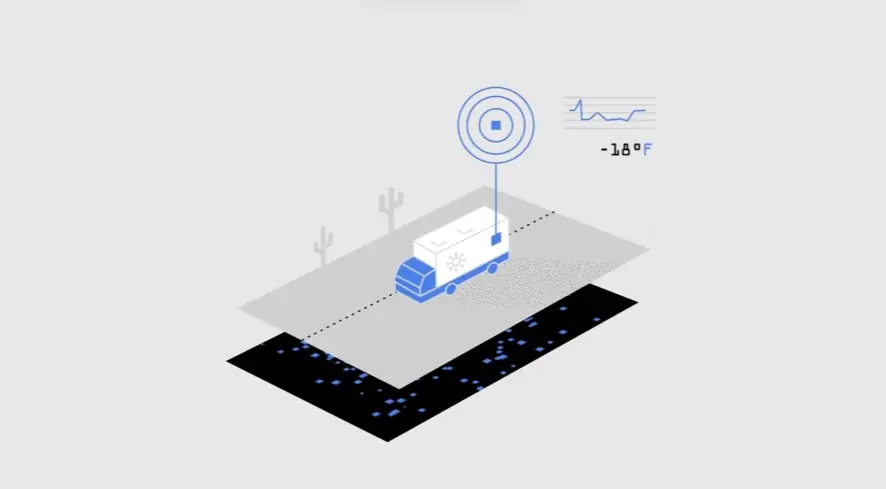Building anticipation with strategic pre launch videos
Building anticipation starts long before the main unveiling. Strategically crafted pre-launch content plays a vital role in generating buzz and capturing early interest. Marketers leverage the Ecommerce Product Launch Video during this phase to tease features, hint at benefits, and tell the story behind the upcoming product, creating a sense of excitement among potential customers.
Creating effective pre- launch videos requires tailoring content not only to the message but also the intended platform. An ad video designed for social media feeds needs to grab attention instantly, often communicating effectively even when viewed without sound. Teams must consider viewer intent across different channels, adapting length and style accordingly.
Teams refining their pre-launch video approach should focus on specific actions they want viewers to take and measure the impact of their efforts. Analyzing viewer behavior provides insights into what resonates most.
- Employ specific calls to action aligned with the pre-launch goal, encouraging sign-ups for updates or joining a waitlist rather than generic prompts.
- Utilize data from attention tracking tools and heatmaps to understand which video segments are most engaging and where interest drops.
- Showcase the product within real-world scenarios , demonstrating practical value and incorporating subtle social proof where appropriate.
- Conduct A/B testing on elements like thumbnails, opening hooks, and CTA variations to refine performance and maximize early engagement.
Measuring the eventual return on investment for these early video initiatives helps understand their contribution to building a receptive audience for launch day.
Leveraging launch videos for post product release
Leveraging launch videos extends their impact well beyond the initial release buzz. While the initial announcement video serves to introduce the product, its strategic value extends far beyond launch day. Marketers can actively deploy this asset to guide potential customers further along their journey. A critical step involves incorporating clear and specific calls to action at the video's conclusion, moving past vague prompts to action-oriented text tailored to the viewer's potential next step.
Measuring the true success of these videos post-launch requires tracking performance against business objectives. This involves measuring ROI not just through production costs versus views, but by evaluating tangible value generated. Examples include quantifying increases in qualified leads influenced by video views, noting reductions in the sales cycle length as prospects arrive better informed, or observing a decrease in support ticket volume from users who gained clarity from the video content.
Detailed videos, perhaps an app demo video illustrating core workflows, offer prospects a realistic view of the product in action. Showing the product integrated into existing workflows or solving problems specific to a user's industry increases its perceived value significantly. Understanding viewer behavior within these videos is also key; analytics tools provide granular data on which segments capture attention or cause drop-off.
- Implement precise calls to action like "Start Your Free Trial" or "Request a Demo" aligned with conversion goals .
- Demonstrate features within relevant, real-world scenarios to enhance relatability and believability for the audience.
- Utilize heatmaps and attention-tracking data to pinpoint confusing sections needing optimization or high-interest areas to leverage.
- Conduct A/B testing on elements such as thumbnails, initial seconds, or CTA variations to optimize engagement and conversion rates.
By implementing these strategies, businesses transform launch videos into powerful, long-term assets driving continued growth and deeper customer understanding.
Crafting effective video calls to action for ecommerce
The conclusion of a launch video presents a crucial opportunity demanding precise calls to action. Moving beyond vague phrases like "learn more," employ specific, action-driving language tailored to the video's objective and the viewer's stage. Think direct prompts such as " start free trial ," "request a demo," or "buy now." This deliberate precision guides viewers towards the desired next step, converting interest into measurable engagement.
Effectively demonstrating video value requires teams to calculate ROI by weighing production cost against tangible gains. This value includes enhanced lead quality, a shortened sales cycle due to better-informed prospects, and even fewer support tickets from users who understood features through watching. Presenting product features within authentic, real-world use cases boosts believability; a well-crafted ecommerce demo video excels here, guiding users towards trying the solution shown. Analyzing audience actions using tools like heatmaps provides granular data revealing confusing segments or points where interest drops, informing future content refinement.
Building viewer trust strengthens conversion potential . Incorporate social proof elements like brief flashes of well-known client logos or statistics about satisfied users . A customer story video can provide powerful snippets reinforcing value before presenting a relevant CTA. Continuous improvement stems from systematically employing A/B test elements. Experiment with thumbnails, opening seconds, CTA wording and placement, or even script variations. Testing uncovers what resonates most with the target audience, driving higher conversions and maximizing video effectiveness across diverse viewing platforms and contexts.
- Use heatmaps identify video sections causing drop-offs optimize content flow.
- Test distinct call to action button designs or text variations see which converts highest.
- Integrate brief testimonials or trust badges near final CTA increase confidence.
- Create platform-specific video cuts shorter versions for social media longer for landing pages.
Strategic CTAs data-driven refinement prove critical maximizing launch video impact and achieving conversion goals.
Optimal video placement on ecommerce product pages
Product page videos offer a powerful opportunity to connect with potential buyers at a critical moment. Placing these videos strategically enhances their impact. They should reside where visitors immediately see them, often high on the page, avoiding the need for extensive scrolling. A compelling thumbnail acts as the initial invitation, promising valuable insights within. Optimal integration means smooth playback fitting the page design, ensuring nothing distracts from the viewing experience or the path to purchase.
Concluding the video requires clear, specific calls to action. Generic prompts yield fewer results than action-oriented text directly relevant to the product and the viewer's likely next step. Measuring the effectiveness involves looking beyond simple view counts; businesses track tangible outcomes like increased conversion rates directly linked to video views or a reduction in support inquiries as prospects gain better understanding. Analyzing viewer behavior provides granular data, revealing which segments hold attention and which might cause drop-offs, guiding content refinement.
Integrating real-world scenarios makes the product relatable. Demonstrating features within contexts mirroring a user's potential experience highlights practical value and eases understanding. For complex offerings, a well-structured explainer video on this page can break down benefits effectively. Incorporating social proof, perhaps showing recognizable client logos, builds immediate trust and credibility with the audience exploring the product. A/B testing different elements, from the opening hook to the specific call to action on this crucial landing page video, refines performance and uncovers winning variations.
Here are key strategies they employ:
- Place videos prominently "above the fold" for immediate visibility.
- Use specific, action-oriented text for video calls to action.
- Track product-page specific metrics to gauge video ROI effectively.
- Leverage viewer analytics to identify and improve video segments.
These thoughtful placements and content optimizations collectively elevate the product page video's ability to inform, persuade, and convert browsing visitors into confident customers.
Best video formats for ecommerce product launches
Optimizing ecommerce launch video formats is crucial for capturing attention and driving conversions . They serve to educate and engage potential customers, making the product more appealing. Tailoring these visuals ensures they resonate with viewers across various platforms.
Embedding clear, specific calls to action proves vital. Rather than generic prompts, action-oriented text like "Start Your Free Trial" or "Shop Now" guides viewers toward desired outcomes, aligning with the video's purpose and where viewers are in their journey. Measuring the ROI of a launch video involves comparing production costs against generated value, such as increased leads or reduced support inquiries.
Showcasing products in real-world scenarios enhances relatability. Demonstrating how an item integrates into existing routines or solves particular problems, perhaps in a problem solution video , boosts perceived value. Analyzing viewer behavior through analytics tools, including heatmaps, reveals which parts of a video hold attention or cause drop-offs, providing data for refinement. Incorporating social proof, like displaying recognizable brand logos that use the product or sharing statistics on satisfied customers, quickly builds trust and credibility.
A/B testing various video elements offers significant insights. Experimenting with thumbnails, initial content, or CTA wording helps determine what resonates most with the target audience and drives better conversions. Optimizing for different platforms requires considering viewer intent and environment. Social media often demands short, instantly engaging content, potentially using text overlays for sound-off viewing, while product pages can accommodate longer, more detailed presentations. A well-optimized video strategy is a powerful tool.
Designing launch videos with a mobile first mindset
Optimizing ecommerce launch videos for mobile viewers requires deliberate choices. Creators must prioritize designs that capture attention instantly on small screens and function well in varied viewing environments. This means ensuring visuals are clear even without sound and text overlays are easily readable during a quick scroll. Understanding how people watch on their phones – often in portrait mode, quickly, and possibly without audio – shapes every design decision.
Clear calls to action become critical tap points, not just prompts. They should use action-oriented text like "Shop Now" or "Download App," directly relevant to what the viewer can do immediately on their device. Measuring success involves tracking mobile-driven conversions, attributing value generated specifically from views on handheld devices, accounting for the production costs of mobile-optimized assets. Showcasing the product within relatable mobile use cases demonstrates its value effectively. Whether crafting a concise product demo video highlighting core functionality or a slightly longer product explainer video detailing benefits, adapting content for mobile attention spans is key.
Analyzing mobile viewer behavior through heatmaps and attention tracking helps identify moments where interest wanes on a small screen. Incorporating social proof, like brief appearances of well-known logos, builds quick credibility suitable for mobile consumption. Teams should conduct A/B tests on mobile-specific elements, such as vertical video thumbnails or CTA button designs, to refine performance. Tailoring content length and style for platforms like Reels or TikTok, focusing on immediate hooks and visual storytelling , leverages the reader's existing understanding of these short-form spaces.
- prioritize designs
- Clear calls to action
- mobile viewer behavior
- social proof
Designing with a mobile-first mindset ensures launch videos connect effectively with today's audience, maximizing impact where people spend most their screen time.
How product launch video addresses customer problems
Effective product launch videos go beyond simply showcasing features; they serve as a direct response to customer problems, offering clarity and building confidence. Rather than vague descriptions, these videos address specific pain points prospective buyers face, demonstrating how the product provides a tangible solution, making the value proposition immediately clear and relevant.
Guiding viewers toward the next step is crucial. Tailored calls to action use action-oriented language, precisely matching the viewer's current stage in their buying journey and the video's specific objective. This targeted approach ensures viewers know exactly what to do, whether requesting a demonstration, starting a free trial, or exploring integration options, removing friction from the conversion path. Creators often find success showcasing granular capabilities; a focused product highlight video , for example, can deeply resonate by proving mastery over a particular challenge viewers experience.
Presenting the product within real-world contexts allows viewers to easily envision its utility in their own lives or workflows. Demonstrating seamless integration into existing processes or showing how the product solves problems specific to an industry increases its perceived value dramatically. Offering a complete view builds confidence; this is where a comprehensive product showcase video becomes invaluable, walking viewers through the user journey and capabilities.
- Understanding viewer behavior through analytics tools like heatmaps reveals precisely which parts of the video resonate most, helping identify confusing sections.
- Incorporating social proof, such as brief flashes of recognizable customer logos or user statistics, quickly builds credibility and trust with the audience.
- Employing A/B testing on elements like thumbnails, introductions, or calls to action provides data-driven insights into what truly captures attention and drives desired actions.
- Optimizing video length and style based on the platform and audience's platform intent ensures the message connects effectively where viewers are seeking solutions.
By strategically implementing these techniques, video becomes a powerful tool for addressing customer needs , not just announcing a product, leading to better engagement and measurable results.
Showcasing key product features in launch video
Teams creating product launch videos understand the power visuals hold. Building on demonstrating product value, the focus shifts to maximizing feature showcasing impact. This involves careful planning beyond simply displaying functionality; it requires strategic elements that drive viewer action and provide measurable results. Getting specific with calls to action proves vital.
Instead of general requests, employing action-oriented text like "Start Your Free Trial" guides viewers toward desired outcomes. Tailoring these prompts ensures they align with the video goal and viewer journey stage. To gauge success, measuring the ROI of a product video becomes essential. This tracks production costs against value generated, offering a clear picture.
Value manifests in various ways. Increased qualified leads represent one metric. Reduced sales cycle length, gained because prospects gain understanding from well-made content, presents another. A decrease in support ticket volume after users interact with a thorough product tutorial video also shows tangible value. Incorporating real-world scenarios significantly boosts relatability.
Showcasing features within relevant contexts, demonstrating product integration into existing workflows or solving specific industry problems, increases its perceived value dramatically. Gaining deeper insights involves analyzing viewer behavior. Using heatmaps or attention-tracking tools reveals exactly which video parts viewers watch or skip. This granular data helps identify confusing segments needing refinement. Incorporating social proof, such as displaying well-known company logos using the product, quickly builds credibility. A/B testing different video elements, from thumbnails to CTAs, yields significant insights into audience resonance.
Proactively handling common customer objections in video
Common customer objections frequently surface before purchase decisions finalize. Creators proactively address these leveraging video elements fostering confidence. Effectively tackling potential concerns within the video narrative strengthens viewer trust building a smoother path toward conversion. They must anticipate viewer questions weaving answers seamlessly into content flow.
Showcasing products real-world scenarios demonstrates their practical application dissolving doubts about fit or value. A SaaS demo video proves particularly effective dismantling objections related software complexity illustrating user interface ease. Presenting tangible benefit s achieved by existing users through integrated social proof, like brief testimonials or recognizable brand logos, provides powerful evidence against skepticism. This third-party validation significantly boosts credibility.
Guiding viewers toward action post-viewing requires deliberate effort. Clear, specific calls to action remove ambiguity ensuring viewers know precisely steps next. Using action-oriented language like "Request a Demo" or "Start Your Free Trial" rather than generic prompts encourages desired conversions aligning with viewer intent.
- Analyze viewer behavior data pinpointing moments audience disengages suggesting unaddressed concerns.
- Utilize heatmaps attention tracking understand exact video segments causing confusion hesitation.
- A/B test different video versions comparing effectiveness addressing objections content delivery calls to action.
- Measure video ROI by tracking conversions directly influenced video content successfully handling objections.
Tailoring video content platforms viewing environments ensures message reaches audience effectively countering platform-specific hurdles creating objections. An initial promo video might focus awareness while later content addresses specific functional doubts. This strategic approach disarms potential skepticism fostering stronger viewer connection leading greater conversion rates.
This proactive stance turns potential roadblocks into opportunities for deeper engagement demonstrating genuine understanding audience needs building lasting trust.
When to use explainer videos for ecommerce product launches
When product functionality presents complexity or introduces novel concepts, explainer videos become a powerful tool for ecommerce product launches. They effectively bridge the gap between intricate features and consumer understanding, especially crucial during the initial awareness and consideration phases of the buyer journey. Crafting these videos requires a strategic approach focusing on demonstrating value and facilitating comprehension rather than merely showcasing features.
Showing real-world usage within relevant contexts makes the product relatable and believable. Illustrating how it integrates into existing workflows or addresses specific user challenges significantly elevates its perceived value. Beyond explaining features, weaving in strategic social proof, like brief mentions of well-known users or relevant statistics, builds immediate credibility.
Maximizing video impact involves several key tactics. Clear, action-oriented calls to action concluding the video guide viewers toward the next step. Tailoring video length and style for different platforms is essential; a short form video might excel on social feeds needing instant engagement, while a product page allows more detail. Analyzing viewer engagement data through analytics tools provides critical insights into what resonates, allowing for data-driven optimization.
- Use calls to action like "Start Your Free Trial" or "Download the Report" aligning with viewer intent.
- Measure success beyond vanity metrics by tracking impact on qualified leads or reduced support inquiries.
- Analyze viewer behavior via heatmaps to identify engaging or confusing video segments for refinement.
- Deploy a teaser video to build anticipation pre-launch and A/B test elements like thumbnails or intro hooks for better performance.




































